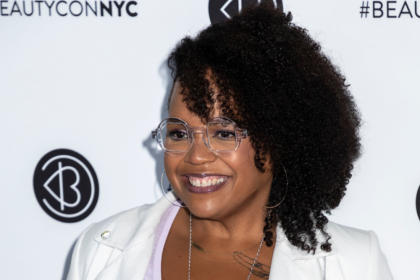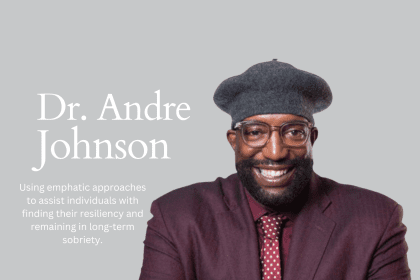Glasses have long transcended their practical origins, becoming a powerful symbol of intelligence and sophistication in modern society. What transforms a simple pair of spectacles into a statement of intellectual prowess? The visual language of eyewear extends far beyond mere functionality, weaving a complex narrative of perception, identity, and social dynamics.
Cultural lens of intelligence
The connection between eyewear and intellect runs deep, rooted in decades of social and professional conditioning. Far more than a vision correction tool, glasses have become a nuanced form of personal branding. This phenomenon intersects psychology, sociology, and personal presentation, revealing how a simple accessory can dramatically shape social perception.
Scholarly association
From the earliest days of academia, glasses have been intrinsically linked to intellectual pursuit. Scholars, researchers, and thinkers wearing spectacles created a lasting image of knowledge and deep thinking. Historical photographs of renowned intellectuals—from Albert Einstein to Stephen Hawking—have cemented this visual shorthand, transforming eyewear into a symbol of mental acuity.
The association is not merely coincidental. Academics who spent considerable time reading and researching naturally required vision correction, creating an organic link between intellectual work and eyewear. Over time, this practical necessity evolved into a powerful cultural signifier, representing dedication to learning and intellectual rigor.
Facial framing and aesthetics
The right pair of glasses does more than correct vision—it sculpts facial perception. Carefully selected frames draw attention to the eyes, the windows to intellectual engagement. They create a sense of intentionality, making the wearer appear more thoughtful and considered.
Optometric design has advanced significantly, offering frames that complement diverse facial structures. From round frames that soften angular features to angular frames that add definition to softer face shapes, eyewear has become a sophisticated form of personal styling. The strategic selection of frames can highlight cheekbones, draw attention to eye color, and create an impression of deliberate sophistication.
Professional credibility
In professional settings, glasses serve as a subtle marker of seriousness and competence. Whether in boardrooms, classrooms, or research labs, eyewear signals focus and intellectual preparedness. The frames become a visual cue of professional expertise.
Different professional domains have developed their own eyewear aesthetics. Lawyers often choose classic, understated frames that convey authority. Scientists might opt for practical, minimal designs that suggest precision. Technology professionals frequently select contemporary, sleek frames that hint at innovation and forward-thinking approach.
Confidence amplification
Many individuals report a psychological boost when wearing glasses. The frames act as a form of personal armor, providing a sense of sophistication and self-assurance. This increased confidence can manifest in more assertive professional and social interactions.
Psychological studies suggest that wearing glasses can create a form of cognitive armor. The physical barrier between the wearer and the world, combined with the intellectual associations, can help individuals feel more protected and self-assured. This phenomenon extends beyond mere appearance, touching on deeper mechanisms of self-perception and social interaction.
Fashion and personal expression
Contemporary eyewear has evolved into a dynamic fashion statement. Designers now craft frames that reflect personal style, challenge aesthetic norms, and communicate individual identity. The choice of glasses becomes a form of non-verbal communication.
Major fashion houses and independent designers have transformed eyewear into a crucial accessory. Vintage-inspired designs, minimalist frames, bold colors, and unique materials allow individuals to express personality through their eyewear choices. What was once a medical device has become a canvas for personal creativity and style expression.
Academic world connection
Universities and research institutions have long been bastions of the glasses-as-intelligence narrative. From graduate students to tenured professors, eyewear remains a visual marker of academic achievement and intellectual pursuit.
Academic environments cultivate an aesthetic that values intellectual depth. Glasses symbolize this pursuit, representing hours of study, research, and contemplation. The stereotype of the bespectacled scholar continues to resonate, reflecting deeper cultural values about knowledge and learning.
Authority and expertise signaling
Certain professions have particularly strong associations with glasses. Lawyers, scientists, technologists, and educators often use eyewear to subtly communicate expertise. The frames become a silent credential of professional knowledge.
This subtle communication goes beyond mere appearance. Glasses suggest careful observation, attention to detail, and intellectual rigor. In fields that value precision and critical thinking, eyewear serves as a non-verbal indicator of professional competence.
Concealment and presentation
Glasses offer practical advantages in personal presentation. They can minimize perceived facial imperfections, create a sense of polished appearance, and provide an additional layer of personal confidence. The right pair becomes a strategic accessory.
Modern eyewear technology allows for frames that complement diverse facial features. They can draw attention away from perceived imperfections while highlighting an individual’s most attractive qualities. This strategic approach to personal presentation demonstrates the sophisticated role of glasses in social interaction.
Timeless intellectual aesthetic
Classic eyewear designs connect wearers to a rich historical tradition of intellectual figures. Vintage-inspired frames evoke images of groundbreaking thinkers, researchers, and innovators, lending a sense of timeless sophistication.
From round John Lennon-style frames to classic horn-rimmed designs, certain eyewear styles carry historical and cultural significance. These designs transcend mere fashion, connecting wearers to a legacy of intellectual and creative achievement.
Media and cultural representation
Popular culture has consistently reinforced the intellectual narrative of glasses. From iconic movie characters to renowned global leaders, media portrayals have embedded the connection between eyewear and intelligence in collective consciousness.
Movies, television shows, and media representations frequently use glasses as a shorthand for intelligence. Characters portrayed as brilliant scientists, innovative technologists, and deep thinkers are often depicted wearing glasses, further solidifying this cultural association.
Beyond the frame
Ultimately, the power of glasses lies not in the physical object, but in the complex interplay of perception, personal style, and social conditioning. They reveal how deeply visual cues can shape our understanding of intelligence and capability.
The frames we choose tell a story—not just about our vision, but about how we wish to be understood in an increasingly visual world.
This story was created using AI technology.
















